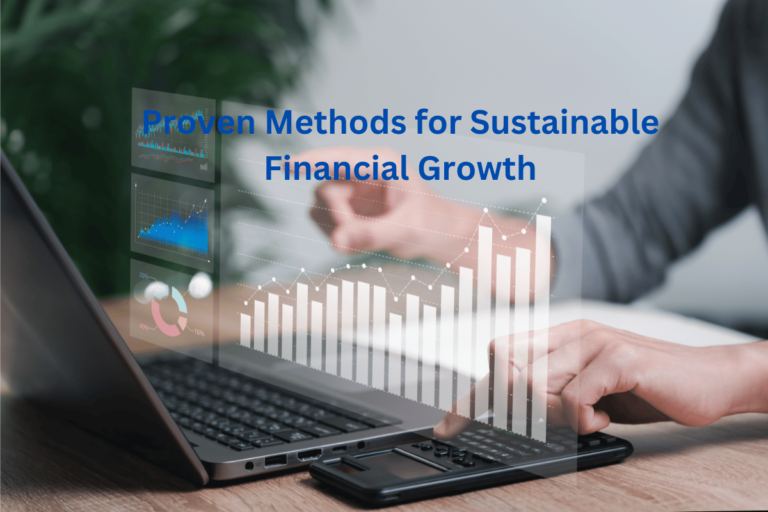Efficient Debt Consolidation Methods Explored
If you find yourself struggling with multiple debts, debt consolidation methods can provide a solution to help you regain control of your finances. By consolidating your debts, you can simplify your repayment process and potentially save money on interest. There are various debt consolidation options available, each with its own benefits and considerations.
When exploring debt consolidation methods, it’s important to assess your financial situation and choose the option that best suits your needs. Whether it’s credit card consolidation, loan consolidation, or debt consolidation plans, understanding the available strategies will allow you to make an informed decision.
Key Takeaways:
- Debt consolidation combines multiple debts into one, simplifying the repayment process.
- There are various debt consolidation methods, including credit card consolidation and loan consolidation.
- Credit card consolidation can be done through balance transfer credit cards or debt consolidation loans.
- Loan consolidation approaches include personal loans, home equity loans, and home equity lines of credit (HELOC).
- Debt consolidation plans involve debt management programs or obtaining a debt consolidation loan.
Credit Card Consolidation Methods
One common form of debt consolidation is credit card consolidation. This can be done through balance transfer credit cards or debt consolidation loans. Balance transfer credit cards allow you to transfer balances from multiple credit cards onto one card with a lower interest rate, often with a promotional period of 0% APR. Debt consolidation loans involve taking out a new loan to pay off existing credit card debts, effectively consolidating them into one loan with a potentially lower interest rate.
Balance Transfer Credit Cards
If you have multiple credit card balances with high interest rates, a balance transfer credit card can be a viable option to consolidate your credit card debt. With a balance transfer credit card, you can transfer the outstanding balances from your existing credit cards onto this new card, which usually offers a lower introductory APR, sometimes even 0% for a certain period of time.
During the promotional period, you can focus on paying off the consolidated balance without incurring interest charges. However, it’s important to note that after the promotional period ends, the interest rate can increase significantly. So, it’s crucial to pay off as much debt as possible before the promotional period expires.
Debt Consolidation Loans
Another credit card consolidation method is through debt consolidation loans. These loans allow you to borrow a lump sum of money to pay off your existing credit card debts. By doing so, you effectively consolidate multiple credit card balances into one loan with a potentially lower interest rate and a fixed repayment term.
Debt consolidation loans can offer advantages such as simplifying your repayment process by merging multiple payments into one, potentially reducing your monthly payment, and allowing you to have a clear end date for becoming debt-free. However, it’s important to carefully review the terms of the loan, including interest rates, fees, and repayment terms, to ensure that it aligns with your financial goals.
Here’s an example table illustrating a comparison between balance transfer credit cards and debt consolidation loans:
| Comparison | Balance Transfer Credit Cards | Debt Consolidation Loans |
|---|---|---|
| Interest Rate | Low or 0% introductory APR, may increase after promotional period | Potentially lower interest rate compared to credit cards |
| Repayment Term | Promotional period, usually 6 to 18 months | Fixed term, typically 2 to 7 years |
| Monthly Payment | Depends on the balance transferred | Potentially lower monthly payment |
| Additional Fees | Balance transfer fees may apply | Origination fees or closing costs may apply |
Remember, both balance transfer credit cards and debt consolidation loans have their own pros and cons. It’s crucial to evaluate your financial situation, compare the options available, and choose the credit card consolidation method that best suits your needs.
Loan Consolidation Approaches
When it comes to debt consolidation, there are several loan consolidation approaches you can consider. These approaches provide alternative options to help you simplify and manage your debts more effectively.
1. Personal Loan
A personal loan is a popular choice for debt consolidation. You can obtain a personal loan from banks or credit unions, which can provide you with the funds to pay off multiple debts. With a personal loan, you can combine your debts into one loan, allowing you to make a single monthly payment and potentially secure a lower interest rate.
2. Home Equity Loan
If you own a home and have built up equity, a home equity loan can be a viable option for consolidating your debts. A home equity loan allows you to borrow against the equity in your home and use the funds to pay off your debts. Similar to a personal loan, a home equity loan consolidates your debts into one loan with a potentially lower interest rate.
3. Home Equity Line of Credit (HELOC)
Another loan consolidation approach is utilizing a home equity line of credit (HELOC). A HELOC is a revolving line of credit that uses your home’s equity as collateral. With a HELOC, you can borrow against your home’s equity as needed to pay off your debts. This approach provides flexibility in managing your debts, as you can access funds over a period of time and repay them as you go.
4. Debt Management Plan
Working with nonprofit credit counseling agencies is another option for debt consolidation. These agencies can provide you with a debt management plan that helps consolidate and manage your debts effectively. A debt management plan involves negotiating with your creditors to reduce interest rates, waive fees, and create a structured repayment plan that suits your financial situation.
Consider the loan consolidation approaches mentioned above and evaluate which option aligns best with your financial goals and circumstances. Remember to compare the interest rates, terms, and fees associated with each approach to make an informed decision.
| Loan Consolidation Approaches | Interest Rates | Fees | Credit Score Impact | Repayment Terms |
|---|---|---|---|---|
| Personal Loan | Varies based on creditworthiness | Origination fees | May initially impact credit score, but can improve with consistent payments | Fixed monthly payments over a set term |
| Home Equity Loan | Typically lower interest rates than personal loans | Appraisal fees, closing costs | May initially impact credit score, but can improve with consistent payments | Fixed monthly payments over a set term |
| HELOC | Variable interest rates | Appraisal fees, closing costs | May initially impact credit score, but can improve with consistent payments | Flexible repayment options with a draw period and repayment period |
| Debt Management Plan | Interest rates negotiated with creditors | Monthly counseling fees | May initially impact credit score, but can improve with consistent payments | Structured repayment plan, typically 3-5 years |
Debt Consolidation Plans
When it comes to managing your debt effectively, debt consolidation plans can provide you with the necessary tools and strategies. These plans aim to streamline your repayment process and potentially save you money on interest. There are two primary options for debt consolidation plans: enrolling in a debt management program offered by credit counseling agencies or obtaining a debt consolidation loan from a lender.
A debt management program, provided by reputable credit counseling agencies, involves negotiating with your creditors to reduce interest rates and create a customized repayment plan based on your financial situation. This program allows you to make a single monthly payment to the credit counseling agency, which is then distributed to your creditors, ensuring a simplified and structured approach to debt repayment.
On the other hand, obtaining a debt consolidation loan involves taking out a new loan to pay off your existing debts. By consolidating all your debts into one loan, you effectively simplify your financial obligations and potentially secure a lower interest rate, depending on your creditworthiness. This loan can be used to pay off credit card debts, personal loans, or any other outstanding balances you may have.
It’s important to note that both debt management programs and debt consolidation loans have their own pros and cons, and the right choice for you will depend on your individual financial circumstances and goals. Consider evaluating the interest rates, fees, repayment terms, and impact on your credit score before making a decision.
Benefits of Debt Consolidation Plans
Debt consolidation plans offer several benefits that can help you regain control of your finances:
- Streamlined repayment: By consolidating your debts, you have the convenience of making a single monthly payment, simplifying your financial management and reducing the chances of missing payments.
- Potential interest savings: With a debt consolidation plan, you may be able to secure a lower interest rate, resulting in potential savings over time.
- Improved credit score: Consistently making on-time payments through a debt management program or debt consolidation loan can have a positive impact on your credit score, as it showcases responsible financial behavior.
It’s worth noting that while debt consolidation plans can be highly beneficial, it’s essential to complement them with responsible financial practices. This includes maintaining a budget, practicing mindful spending, and avoiding acquiring new debts.
Debt Reduction Techniques
Accelerate your debt repayment process by implementing effective debt reduction techniques. These strategies, when used in conjunction with debt consolidation methods, can help you achieve financial freedom sooner. Two popular techniques are the snowball method and the avalanche method. Additionally, budgeting plays a crucial role in debt reduction by allowing you to manage your finances better and allocate funds towards debt repayment.
The Snowball Method
The snowball method is a debt repayment strategy that involves paying off debts from smallest to largest balance. Here’s how it works:
- List all your debts, starting from the smallest balance to the largest.
- Make minimum payments on all your debts except for the smallest one.
- Allocate any extra funds towards paying off the smallest debt.
- Once the smallest debt is paid off, move on to the next smallest debt.
- Repeat the process until all your debts are repaid.
By focusing on paying off smaller debts first, you can experience a sense of achievement and motivation as you see progress being made. This approach provides psychological empowerment, helping you stay motivated throughout your debt repayment journey.
The Avalanche Method
The avalanche method is another debt repayment strategy that prioritizes paying off debts with the highest interest rates first. Here’s how it works:
- List all your debts, starting from the one with the highest interest rate to the one with the lowest.
- Make minimum payments on all your debts except for the one with the highest interest rate.
- Allocate any extra funds towards paying off the debt with the highest interest rate.
- Once the debt with the highest interest rate is paid off, move on to the one with the next highest interest rate.
- Continue this process until all your debts are repaid.
The avalanche method can save you more money in the long run by minimizing the total interest paid. While it may take longer to pay off the first debt, this method prioritizes paying off debts with the highest interest charges, reducing the overall cost of your debt.
Implementing a budget is key to successful debt reduction. By creating a budget, you can track your income and expenses, identify areas where you can cut back on spending, and allocate more money towards debt repayment. A budget helps you stay organized and disciplined, ensuring that you stay on track with your financial goals.
Remember, debt reduction techniques like the snowball method and avalanche method are most effective when combined with responsible financial management and a commitment to consistent repayment. By adopting these strategies and implementing budgeting habits, you can take control of your debt and work towards a debt-free future.
Managing Debt Smarter
When it comes to managing debt, being smart about it is essential. By implementing effective debt repayment strategies and adopting better financial planning and money management habits, you can take control of your finances and work towards long-term debt relief.
A key aspect of managing debt smarter is creating a budget. Developing a budget allows you to track your income and expenses, prioritize debt payments, and allocate funds appropriately. By having a clear understanding of your financial situation, you can make informed decisions and ensure that you stay on track with your debt repayment goals.
Another important strategy in managing debt smarter is prioritizing debt payments. By focusing on paying off high-interest debts first, you can save money on interest payments and make a significant impact on reducing your overall debt. Consider using the snowball method or the avalanche method, where you either pay off debts from smallest to largest balance or tackle debts with the highest interest rates first.
Negotiating with creditors is also a valuable tactic in managing debt smarter. By reaching out to your creditors, you may be able to secure lower interest rates, negotiate more favorable payment plans, or even request debt forgiveness in certain circumstances. Open communication with your creditors can lead to mutually beneficial agreements and pave the way for more manageable debt repayment.
“Negotiating with your creditors can provide you with the opportunity to improve your financial situation and make debt repayment more manageable. Don’t hesitate to explore this option.”
Seeking professional advice from financial advisors or credit counseling agencies is another important step in managing debt smarter. These experts can provide guidance tailored to your specific financial situation, offering insights and strategies that can help you effectively manage your debt. They can also assist you in developing a personalized debt repayment plan that aligns with your goals and financial capabilities.
By managing debt more effectively and adopting smarter debt repayment strategies, you can take control of your financial future. Whether it’s creating a budget, prioritizing debt payments, negotiating with creditors, or seeking professional guidance, every step you take towards smarter debt management brings you closer to achieving long-term debt relief.
Benefits of Debt Consolidation
Debt consolidation offers several benefits that can help individuals manage their debts more effectively and achieve financial stability. One of the key advantages is simplified repayment through the consolidation of multiple debts into a single monthly payment. This streamlined approach to repayment eliminates the hassle of keeping track of multiple due dates and amounts, making it easier to stay organized and avoid late or missed payments.
Another significant benefit of debt consolidation is the potential for interest savings. By consolidating debts into a single loan or credit card with a lower interest rate, individuals can reduce the amount of interest they pay over time. This can result in substantial savings, especially for those with high-interest debts like credit cards.
Moreover, successful debt consolidation can have a positive impact on an individual’s credit score. By making consistent, on-time payments towards the consolidated debt and reducing credit utilization, borrowers can demonstrate responsible financial behavior that can boost their creditworthiness over time. This improved credit score can open doors to better interest rates and favorable financial opportunities in the future.
| Benefits of Debt Consolidation | Description |
|---|---|
| Simplified Repayment | Consolidates multiple debts into a single monthly payment, making repayment more manageable and organized. |
| Potential Interest Savings | Consolidating debts can lead to lower interest rates, resulting in savings on interest payments over time. |
| Improved Credit Score | Consistent on-time payments and lower credit utilization can positively impact creditworthiness and lead to an improved credit score. |
Factors to Consider
When considering debt consolidation methods, there are several key factors that you should take into account. These factors will help you make an informed decision and choose the best debt consolidation option for your unique financial situation. Here are the essential factors to consider:
- Interest Rates: Compare the interest rates offered by different debt consolidation options. Lower interest rates can save you money in the long run.
- Fees: Take note of any associated fees, such as origination fees or balance transfer fees. These fees can impact the overall cost of consolidation.
- Credit Score: Evaluate how debt consolidation will affect your credit score. Some methods may have a temporary impact on your credit, but long-term benefits can be realized through responsible repayment.
- Repayment Terms: Examine the repayment terms offered by each consolidation option. Consider the length of the repayment period and monthly payment amounts to ensure they align with your budget.
“Comparing interest rates, fees, credit score impact, and repayment terms will help you choose the debt consolidation method that suits your financial goals and circumstances.”
By carefully considering these factors, you can make an informed decision and select the debt consolidation method that is best suited to your needs. Taking the time to evaluate these factors will ensure that you choose a solution that not only helps you manage your debt effectively but also offers long-term financial benefits.
| Factors to Consider | Personal Loan | Balance Transfer Credit Card | Debt Consolidation Program | Home Equity Loan |
|---|---|---|---|---|
| Interest Rates | Fixed interest rates based on creditworthiness | Introductory low or 0% APR for a promotional period, then variable rates | Negotiated interest rates based on creditor agreements | Typically fixed interest rates lower than credit card rates |
| Fees | Origination fees, late payment fees, or prepayment penalties may apply | Balance transfer fees, annual fees, and late payment fees may apply | Enrollment fees, monthly service fees, and upfront fees may apply | Application fees, closing costs, and appraisal fees may apply |
| Credit Score | May require a good credit score for competitive interest rates | May impact credit score temporarily due to opening a new credit account | May impact credit score temporarily due to enrollment in a debt management program | May require a good credit score and home equity for approval |
| Repayment Terms | Fixed monthly payments over a specific loan term | Variable minimum payments; promotional APR period followed by standard rates | Structured repayment plan determined by the debt consolidation program | Fixed monthly payments over a specified term; repayment tied to home equity |
Conclusion
# Conclusion
Debt consolidation methods offer effective solutions for streamlining debt repayment and achieving much-needed debt relief. By carefully exploring the available options and considering your individual financial circumstances, you can select the debt consolidation method that best suits your needs. However, it is important to understand that debt consolidation alone is not a magic bullet. To fully reap its benefits, you must also implement efficient debt management strategies and prioritize consistent repayment.
By consolidating your debts into a single monthly payment, you can simplify your financial obligations and gain better control over your repayment plan. This can help you avoid missed payments and the accompanying late fees, allowing you to stay on track towards becoming debt-free. Moreover, debt consolidation methods often come with the potential for interest savings, especially when you secure a lower interest rate through a consolidation loan or a balance transfer credit card.
To achieve long-term debt relief, it is essential to combine debt consolidation with responsible financial practices. This includes adopting efficient debt management strategies such as creating a budget, tracking your expenses, and avoiding unnecessary debt. By staying committed to consistent repayment and properly managing your finances, you can successfully consolidate and reduce your debt, ultimately achieving the financial freedom you desire.







